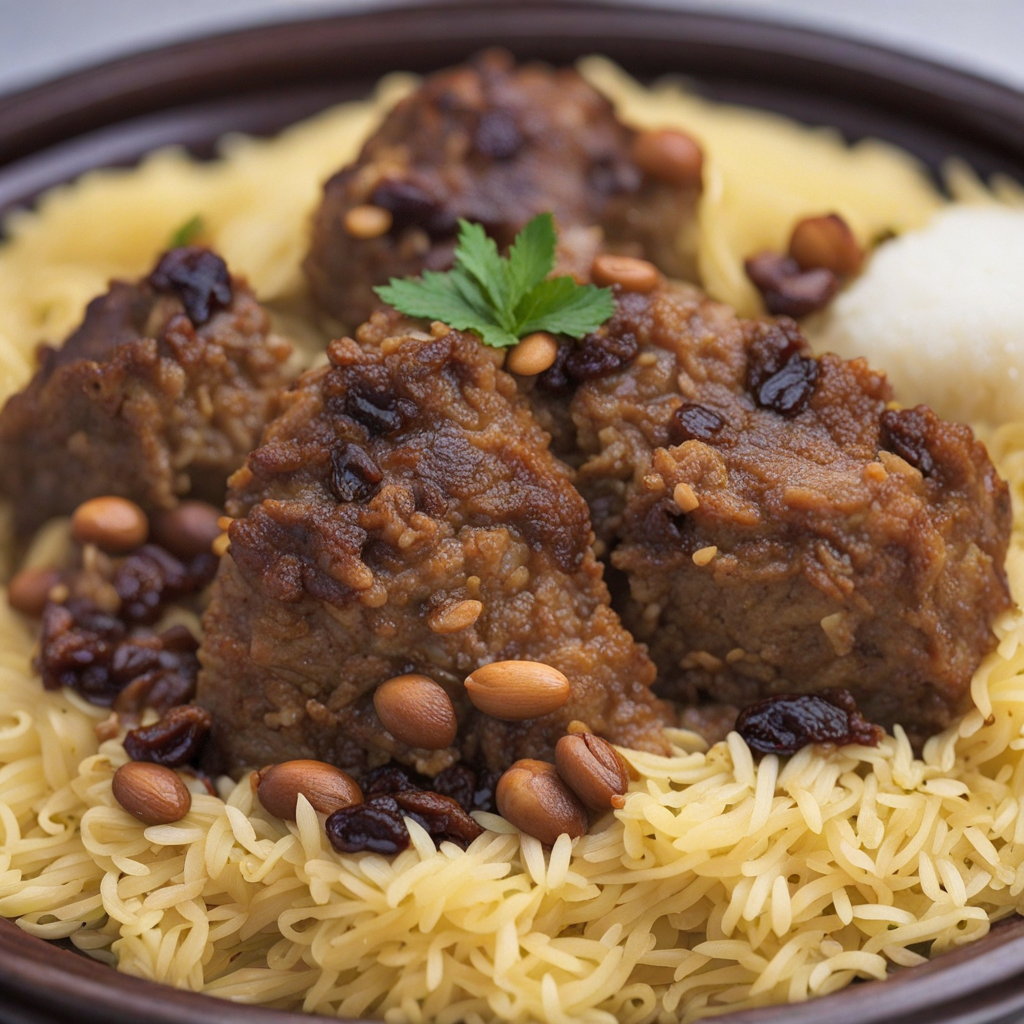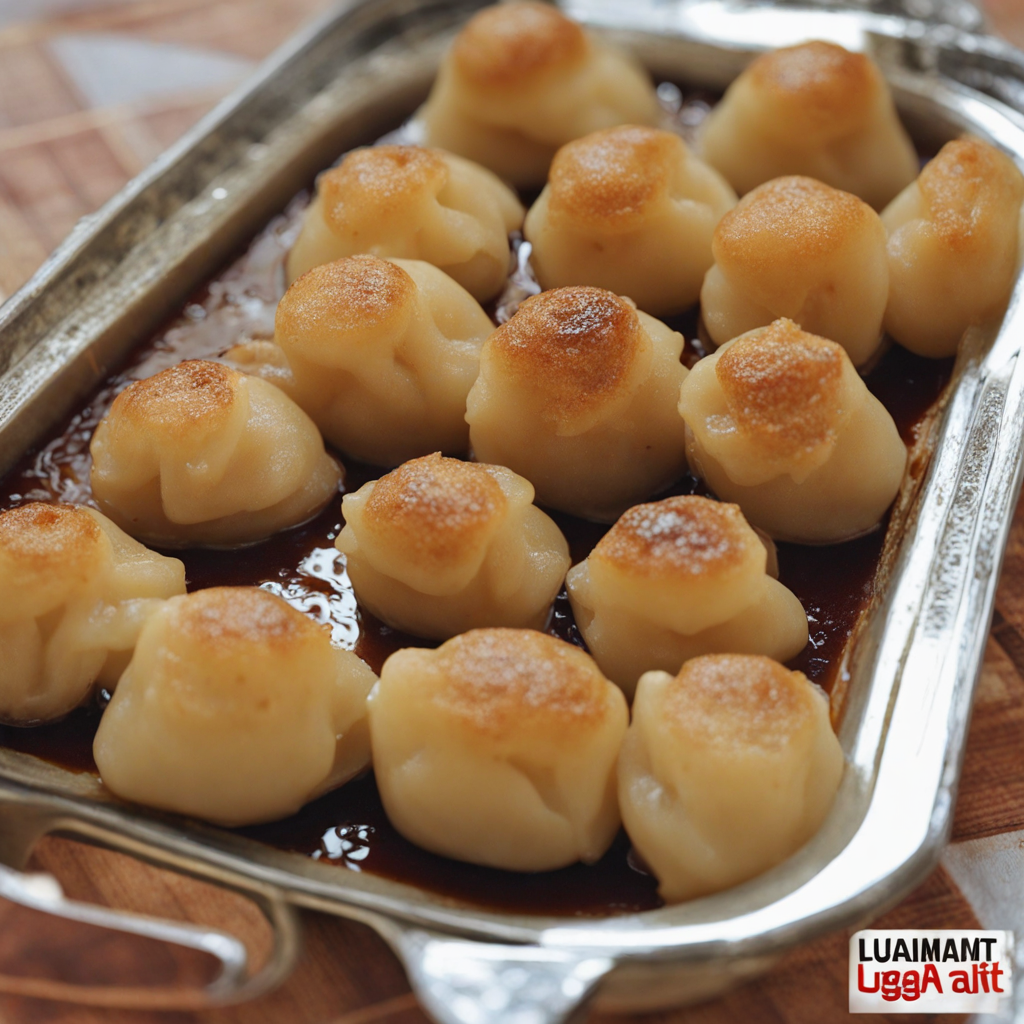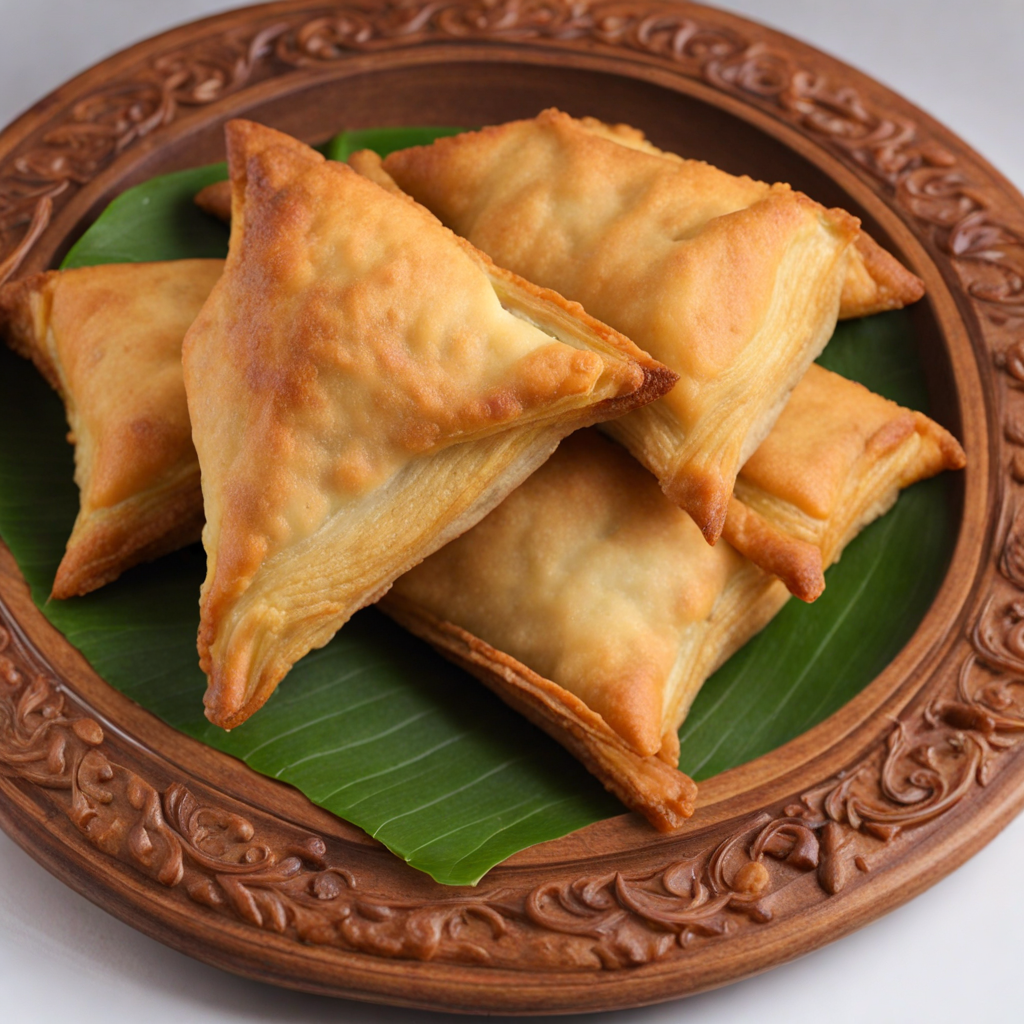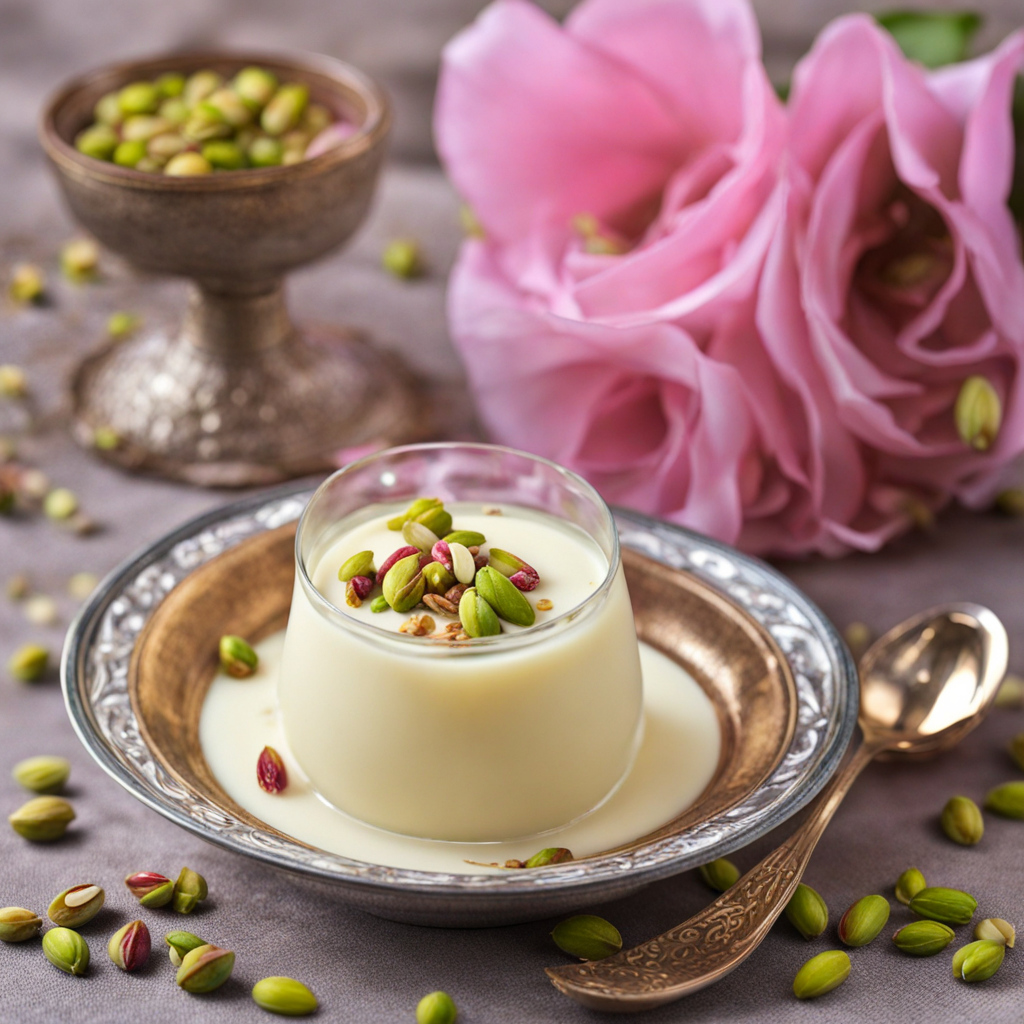Quozi
Quozi is a traditional Kuwaiti dish that showcases the rich flavors and culinary heritage of the region. This delectable meal typically features tender, slow-cooked lamb or goat, which is generously seasoned with a harmonious blend of spices such as cardamom, cinnamon, and cumin. The meat is often marinated and cooked until it reaches a melt-in-your-mouth consistency, allowing the spices to infuse deeply into each succulent bite. The dish is usually served atop a fragrant bed of spiced rice, known as 'machboos,' which absorbs the savory juices from the meat, making every forkful a delightful experience of taste and aroma. Accompanying the Quozi is an array of colorful garnishes, including toasted nuts such as almonds or pine nuts, and sometimes raisins, which add a pleasing crunch and a hint of sweetness to balance the savory flavors. The presentation is often elaborate, with the rice forming a fluffy mound topped with the beautifully roasted meat, all garnished with fresh herbs. This not only makes the dish visually appealing but also enhances the overall dining experience, inviting one to dig in and savor the layers of flavor. Quozi embodies the essence of Kuwaiti hospitality and is often prepared for special occasions and family gatherings, making it more than just a meal; it is a celebration of culture and tradition. The communal aspect of sharing this dish fosters a sense of togetherness, as diners gather around the table to enjoy the rich flavors and aromatic spices that define this beloved culinary treasure. Each bite of Quozi transports you to the heart of Kuwait, offering a taste of its history and the warmth of its people.
How It Became This Dish
Origins of Qouzi Qouzi, a traditional dish deeply rooted in Kuwaiti cuisine, has its origins in the Arabian Peninsula, where it reflects the region's rich history of trade, migration, and cultural exchange. The dish is primarily made of seasoned lamb or goat, cooked slowly to achieve tenderness, and served over a bed of spiced rice. This culinary tradition can be traced back to the nomadic Bedouins who relied on their herds for sustenance and used spices to enhance the flavor of their meals, a practice that has persisted through generations. The name "Qouzi" is derived from the Arabic word "qazā," which means to cook or to boil, indicating the method used to prepare this dish. While Qouzi is enjoyed in various forms across the Middle East, Kuwait has developed its unique spin, incorporating local spices and cooking techniques that reflect the country’s culinary identity. \n\n Cultural Significance Qouzi is more than just a meal; it symbolizes hospitality and celebration in Kuwaiti culture. Traditionally served during festive occasions, family gatherings, and special events such as weddings and Eid celebrations, Qouzi has become a centerpiece of communal dining. The act of sharing this dish embodies the values of generosity and togetherness, as families and friends gather around the large platter to savor the rich flavors and aromas. The preparation of Qouzi is often a communal affair, with family members coming together to assist in cooking, reflecting the close-knit nature of Kuwaiti society. This dish also serves as a cultural marker, distinguishing Kuwaiti cuisine from neighboring countries and allowing locals to express their culinary heritage. \n\n Ingredients and Preparation The ingredients used in Qouzi are a testament to the region's agricultural and pastoral practices. Typically, whole lamb or goat is marinated with a blend of spices, which may include cumin, coriander, cardamom, cloves, and cinnamon. This medley not only enhances the meat's flavor but also pays homage to the spice trade that historically flourished in the Gulf region. The cooking process involves slow-roasting the meat, often in a tandoor oven or over an open flame, to infuse it with smoky flavors while ensuring it remains tender. The rice, usually basmati, is cooked separately and flavored with saffron and other spices, then layered under the meat for serving. Garnishes such as roasted nuts, raisins, and fried onions are commonly added to elevate the dish's presentation and taste. \n\n Historical Development Throughout history, Qouzi has evolved, influenced by various factors such as trade, migration, and globalization. The rise of Kuwait as a trading hub in the 18th and 19th centuries facilitated the introduction of new ingredients and cooking techniques from across the region and beyond. As maritime trade flourished, so did the exchange of culinary practices, leading to the incorporation of Persian, Indian, and Mediterranean flavors into Kuwaiti cuisine. In the 20th century, as Kuwait experienced rapid urbanization and modernization, traditional dishes like Qouzi faced challenges in maintaining their authenticity. However, the resurgence of interest in heritage and traditional cooking has led to a revival of Qouzi, with many families upholding age-old recipes alongside contemporary adaptations. \n\n Modern Interpretations In contemporary Kuwait, Qouzi has taken on new forms, with chefs and home cooks experimenting with variations to cater to evolving tastes and dietary preferences. While traditional Qouzi remains a staple, modern interpretations may feature alternative meats, such as chicken or even vegetarian options, using plant-based proteins to appeal to a broader audience. Restaurants and catering services have embraced Qouzi, offering it as a signature dish that showcases Kuwaiti culinary heritage. This modernization has also led to the integration of international presentation styles, often served in upscale dining settings or as part of international buffet spreads, thus introducing Qouzi to a global audience. \n\n Qouzi in Today’s Society Despite the changes in presentation and preparation, the essence of Qouzi as a communal dish remains intact in Kuwaiti society. Families still gather to enjoy this feast, especially during significant celebrations and holidays. The dish continues to serve as a cultural emblem, representing the pride of Kuwaiti heritage and identity. Moreover, culinary festivals and events in Kuwait often feature Qouzi, promoting its significance to both locals and tourists. These gatherings foster a sense of community and appreciation for traditional cuisine, ensuring that the legacy of Qouzi endures for future generations. \n\n Conclusion Today, Qouzi stands as a symbol of Kuwaiti culture, bridging the past with the present. Its rich flavors, communal significance, and adaptability to modern trends highlight the resilience of Kuwaiti culinary traditions. As the world becomes increasingly interconnected, dishes like Qouzi not only preserve cultural heritage but also invite others to partake in its delicious legacy, fostering understanding and appreciation across borders.
You may like
Discover local flavors from Kuwait







